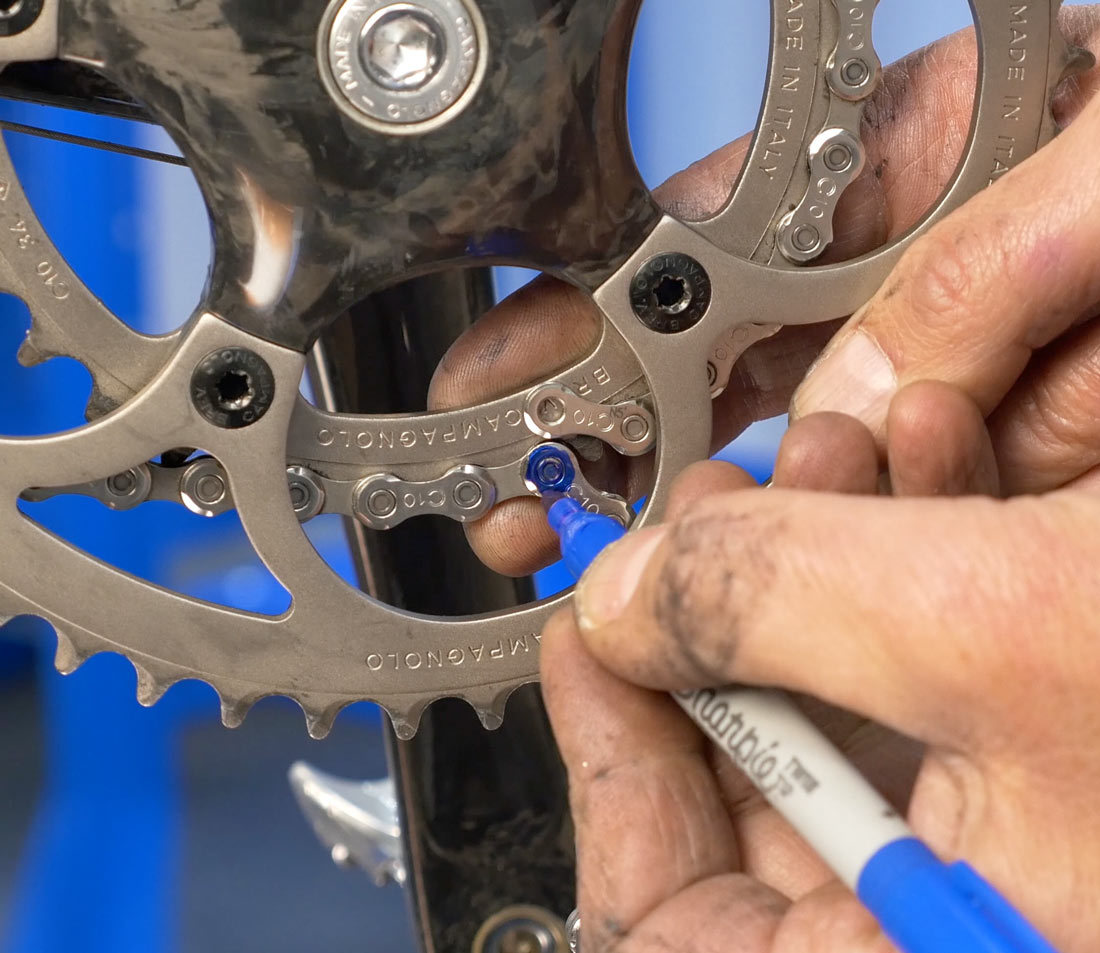Chain Length Sizing: Campagnolo®
While most chains can be sized using the same methods, Campagnolo® recommends specific measures be taken in order to ensure ideal shifting feel at the levers. This repair help article will take you step by step through the methods of sizing Campagnolo® chains.
Preliminary Info
Campagnolo® drivetrains require the longest possible chain length the bike can use. Campagnolo® says this results in a feeling of softness in shifting by reducing spring tension at the pulley cage. You will need a chain tool to break the chain and an 8mm hex wrench to use a feeler gauge. If you are running the eleven speed Campagnolo® chain, note that our CT-4.3 or CT-6.3 include peening anvils.
Before we remove the old chain, we need to confirm it was an acceptable length. If it is, you can simply use that to size the new chain. Shift to the largest sprocket front and rear. If the derailleur makes the shift and there is a bend at each pulley, the chain is not too short.
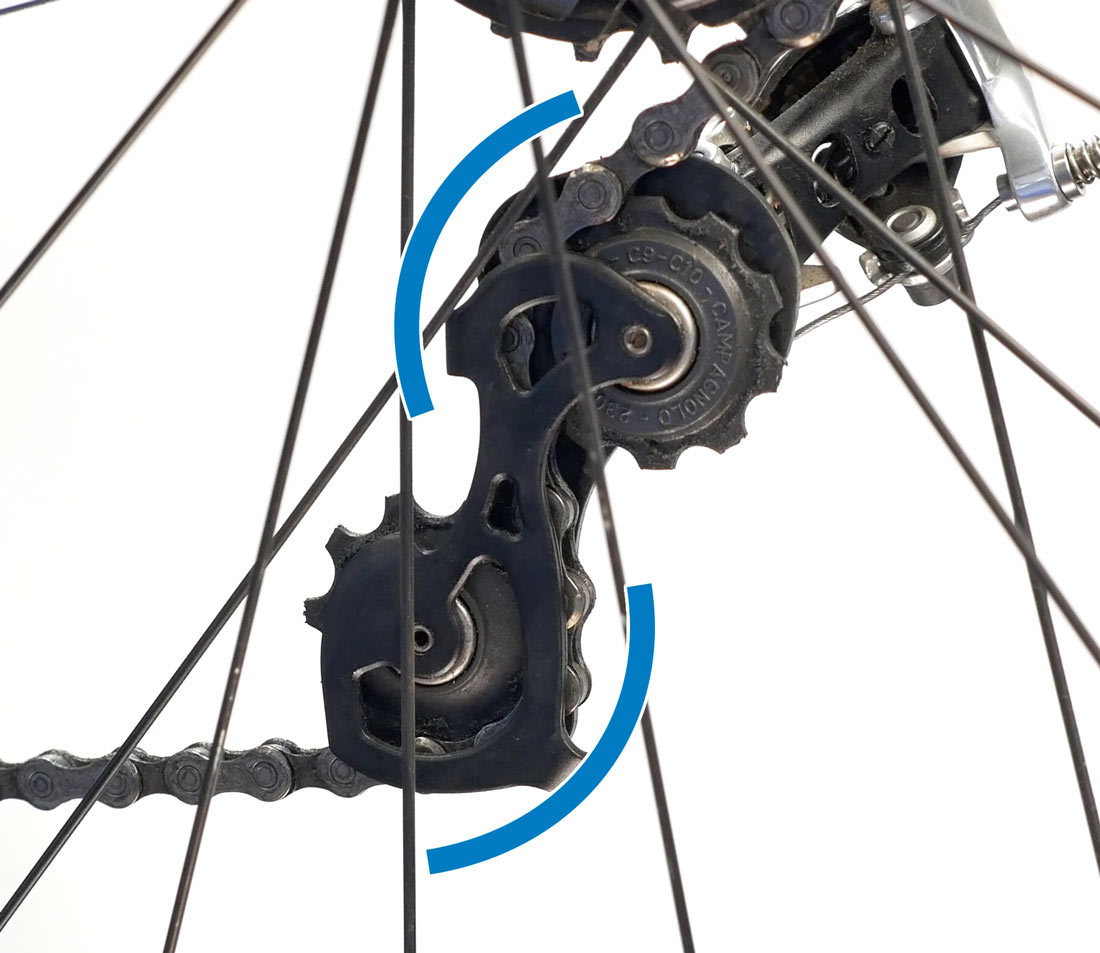
Now, shift to the smallest cog and front chainring. There should be no slack in the lower run of chain. The chain should not be contacting itself at the front guide pulley. In the Campagnolo® sizing system, this gap should be between eight and fifteen millimeters. However, if the gap is less than eight millimeters and the chain is not and the chain is not slack and there is no contact at the pulleys, it is considered a usable length.
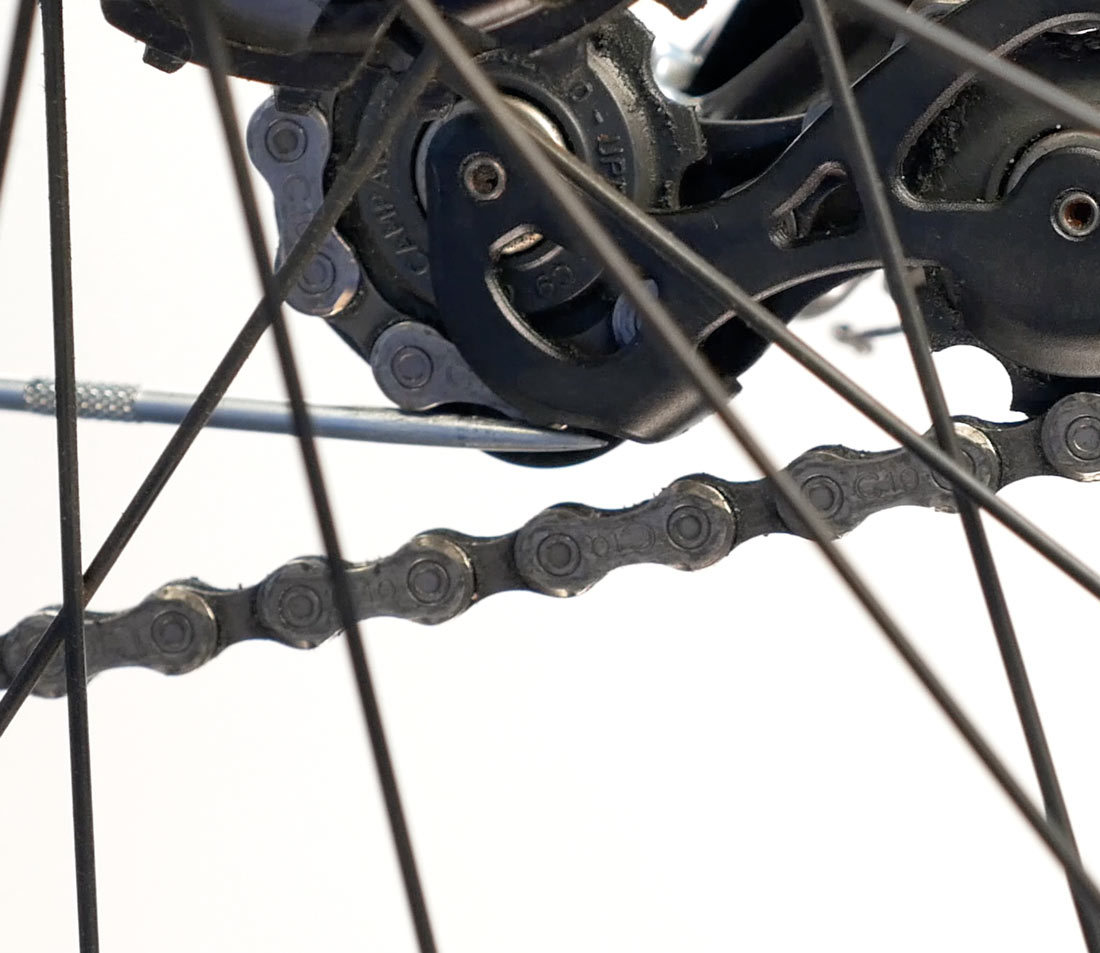
No contact at front guide pulley
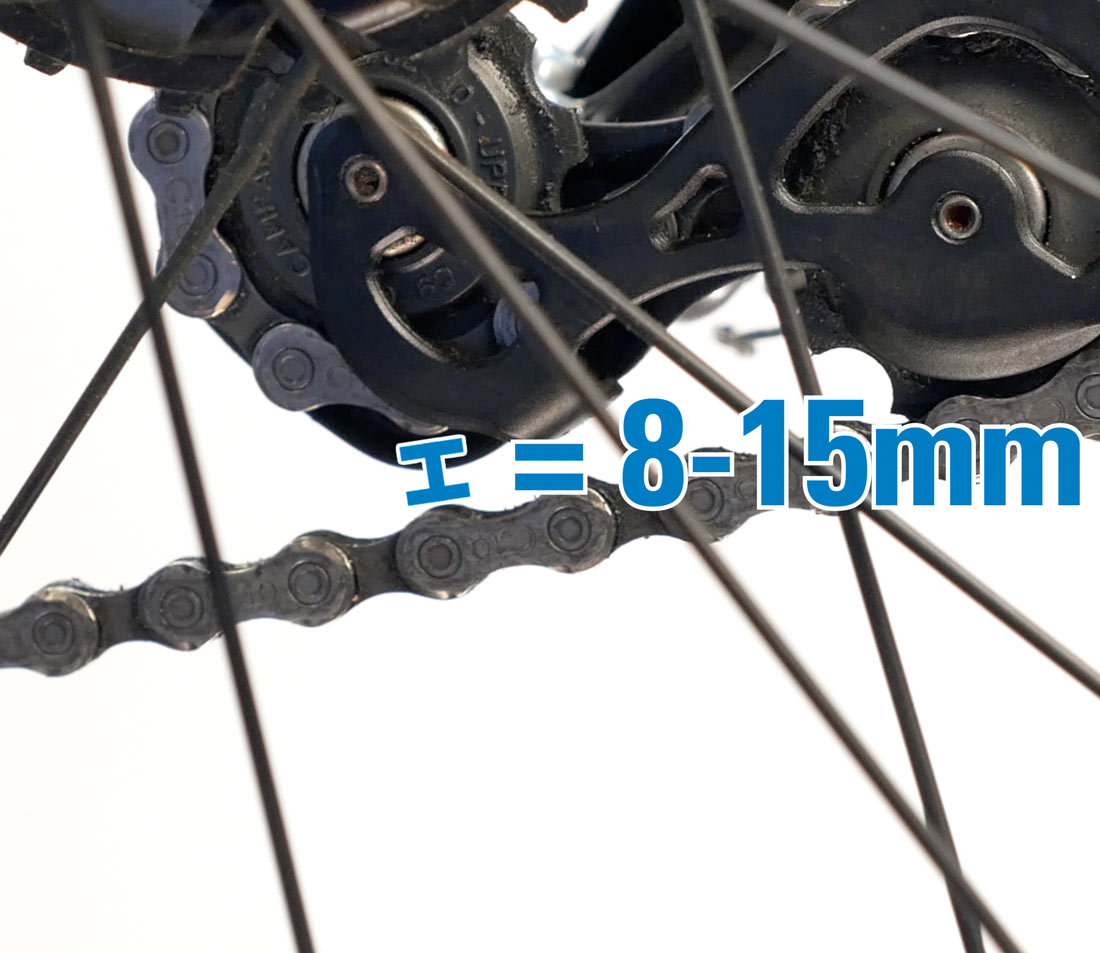
Gap should be 8–15mm
Old Chain Method
If the old chain is an acceptable length, lay it next to the new chain on a flat surface. Always line up ends with outer plates and take care to match them rivet to rivet, noting that old chains will lengthen as they wear. Cut the new chain to the same length as the old chain and voila, your chain is sized.
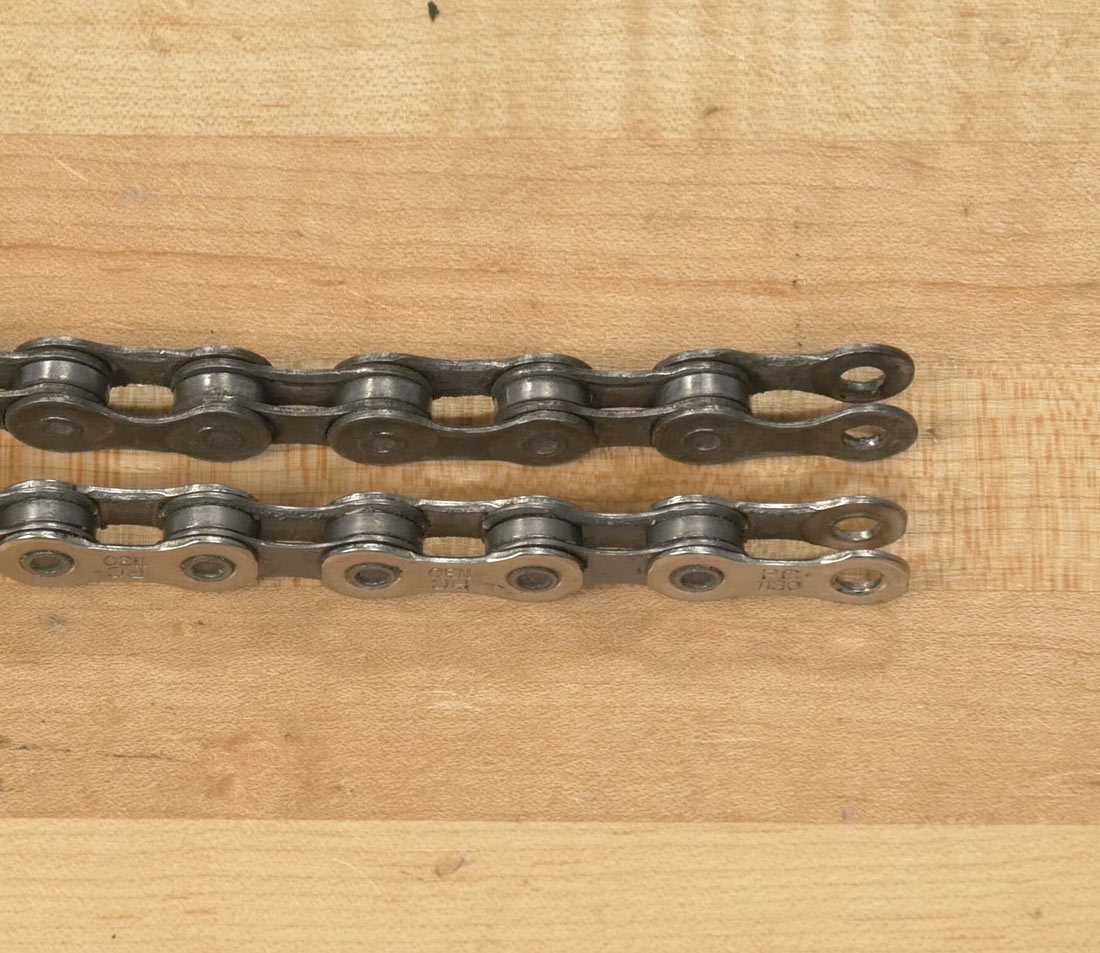
Line up ends
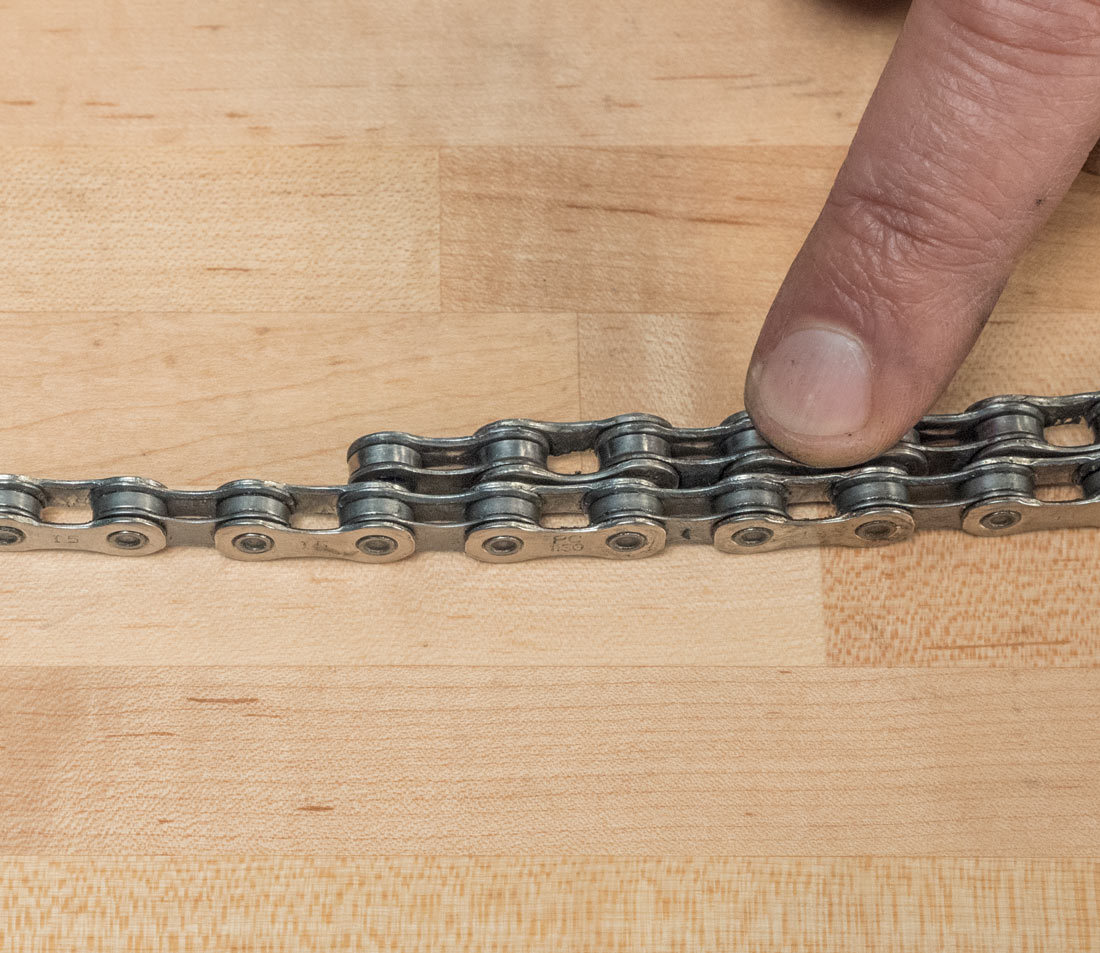
Match rivets on used chain to new chain
New Chain Method
To size a chain without the use of an old chain, begin by removing the old chain and shift both front and rear derailleurs into the smallest cog and front chainring. Using the end with the outer plates, route the new chain through the rear derailleur.
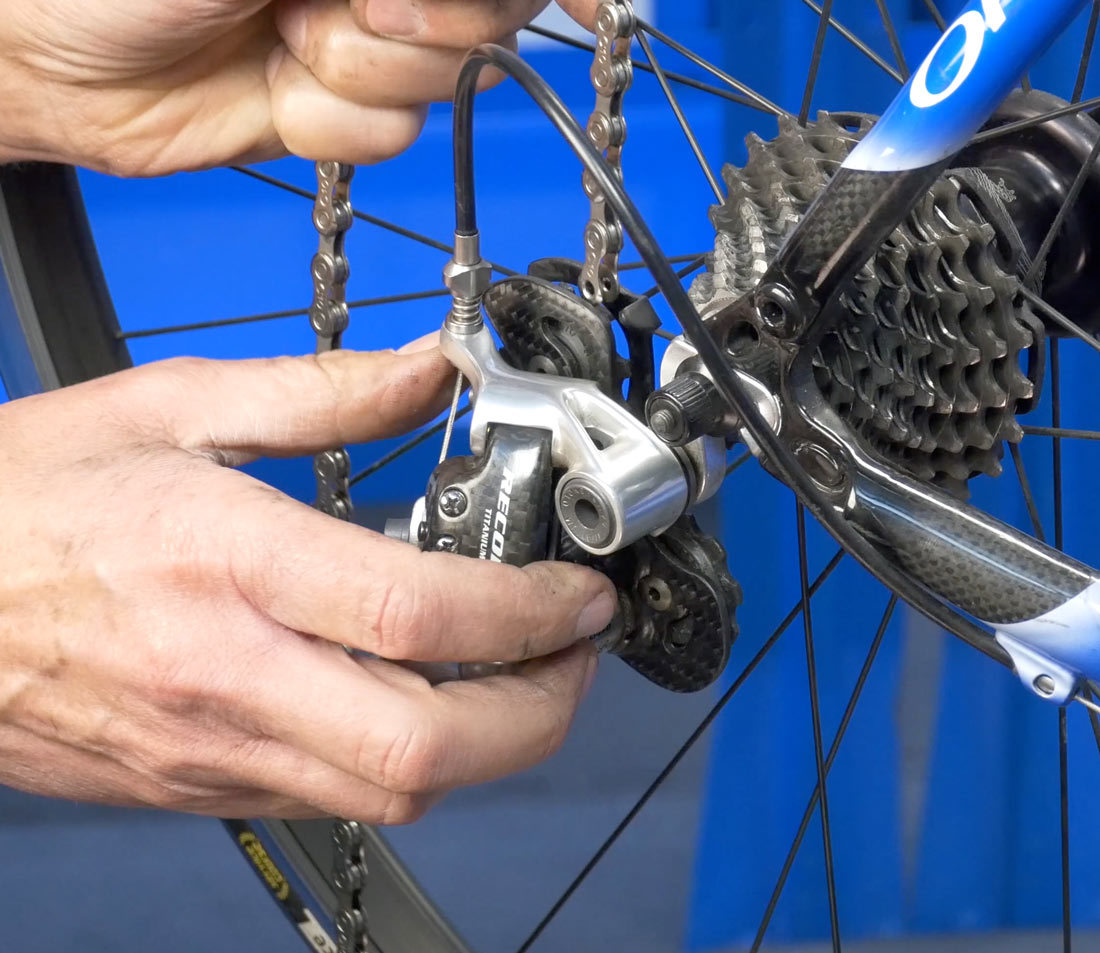
Be sure to route in a straight line from the lower pulley to the upper pulley and be aware of any tabs in the cage and route the chain on on the correct side of the tab.
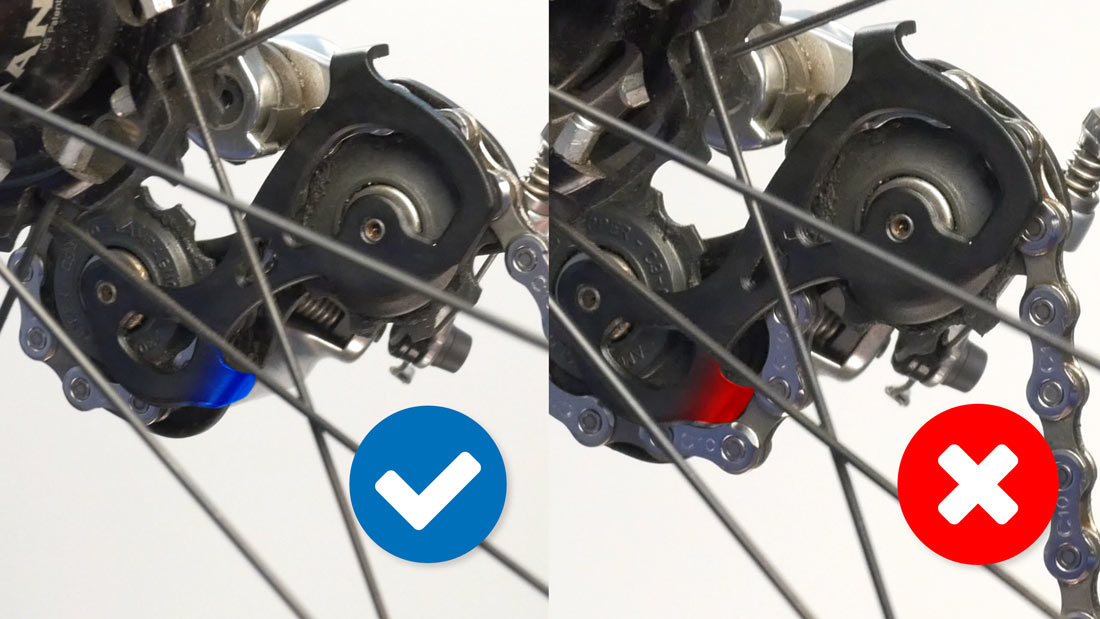
After passing the chain through the rear derailleur and around the smallest rear cog, route it through the front derailleur and onto the smallest chainring.
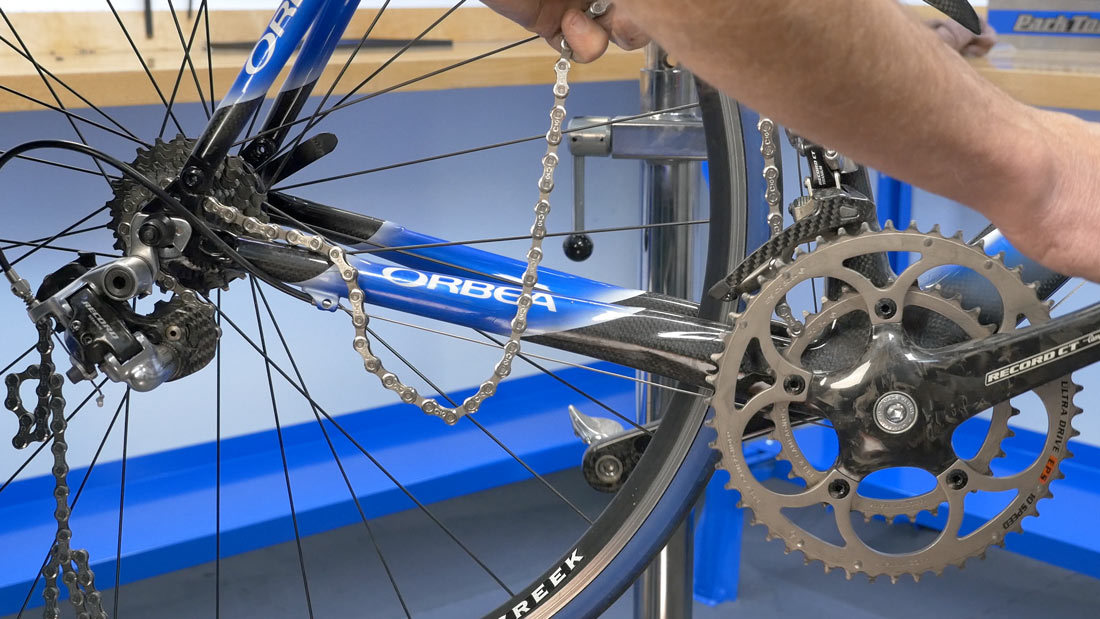
Hold the chain end on the front chainring at the five o’clock position and pull the lower section of the chain well forward until the rear derailleur pulleys are approximately perpendicular to the ground. This will wind up the body and cage pivot spring.
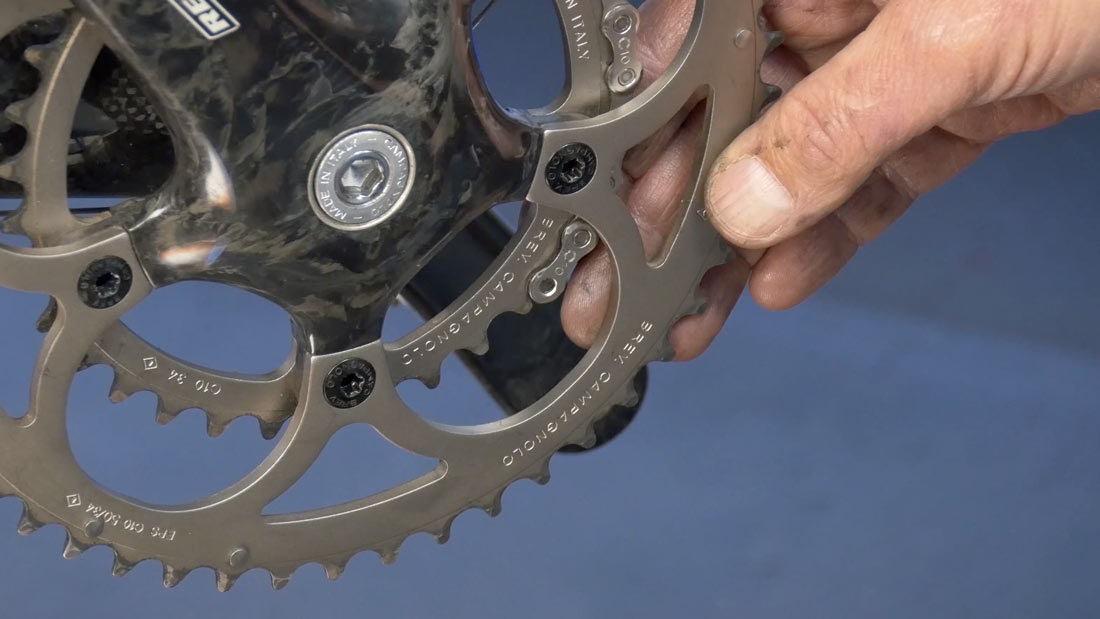
Hold at five o'clock position
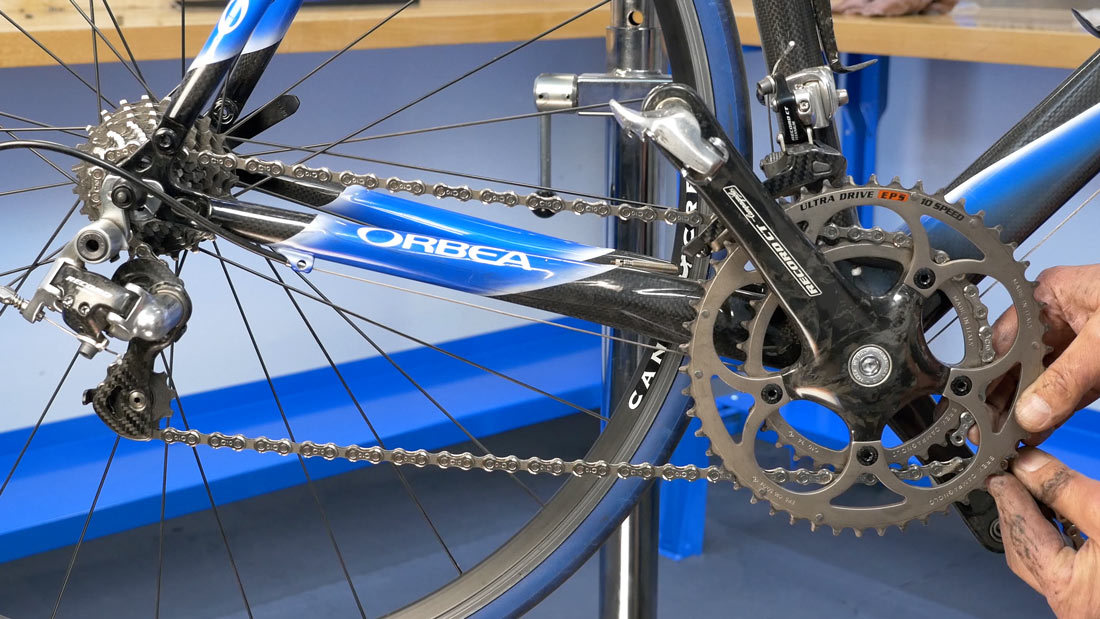
Pull rear rear derailleur until perpendicular
Now begin to lengthen the chain. Extend the lower section of chain one inch, or two rivets at a time. Extend the chain until the gap between the lower section of chain and the section of chain that wraps around the guide pulley cage of the derailleur cage is between eight and fifteen millimeters. To see if the gap is too small, use an eight millimeter hex wrench as a feeler gauge. The wrench should fit into this gap.

8–15mm clearance
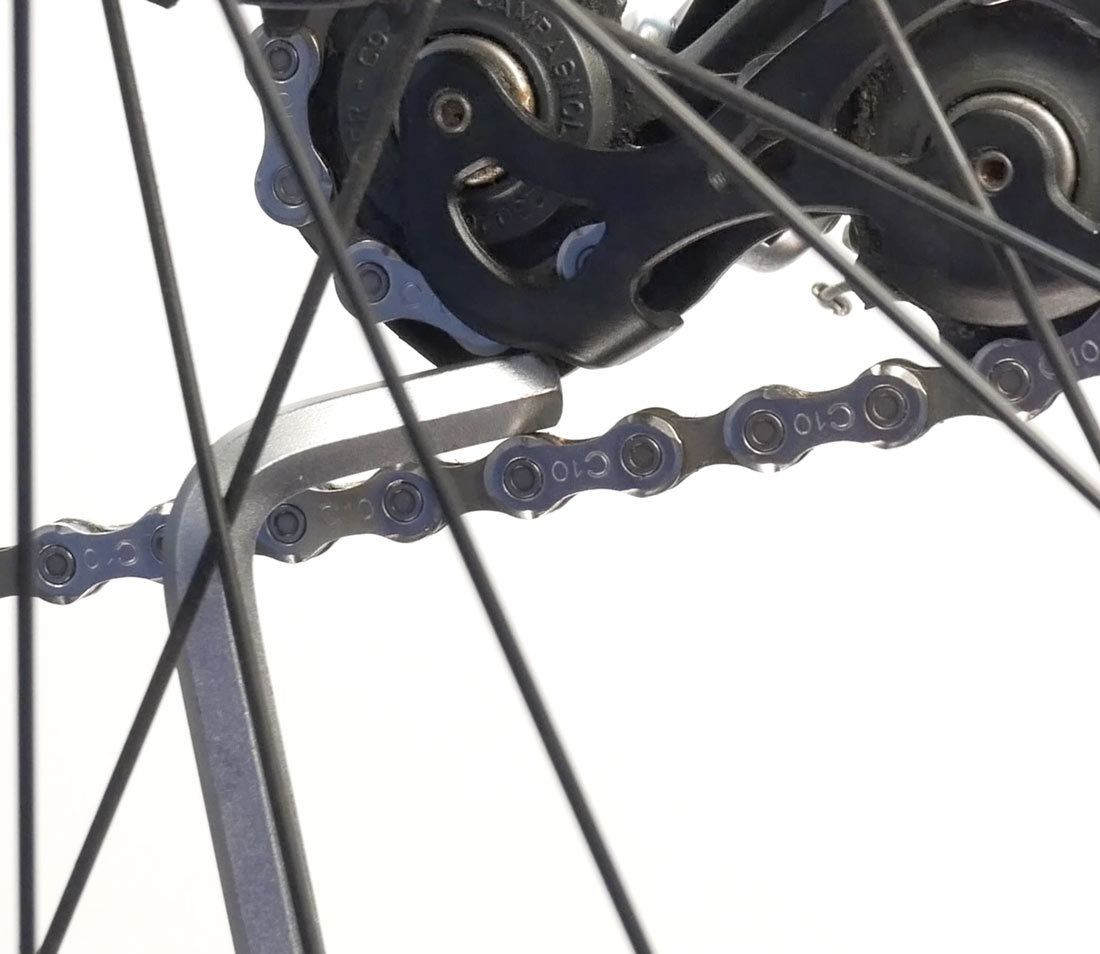
Use 8mm hex as feeler gauge
Mark the rivet to be cut at the front chainring and break the chain using a chain tool. Your chain is now sized and ready for installation.
